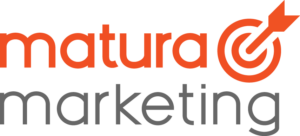As digital marketers in senior living, if there is one thing we learned in 2020, it’s that prospects have a better grasp on technology now than they did before the pandemic.
That said, with all the focus shifting to digital performance, we felt there was need to get back to basics.
If you haven’t noticed, the cost of pay-per-click search engine advertising has increased by about 20%. This makes organic search that much more attractive to senior living executives working hard to recover lost occupancy.
Search engine optimization (SEO) has been and will always be an indispensable tool in your digital marketing program and a proven lead generation strategy in senior living. If it’s not part of your marketing mix, it should be.
SEO Methods for Senior Living Communities
SEO comprises a handful of methods used by web developers to make sure the technical aspects of your website feature the optimal coding structure for search engines to ensure your website’s relevance to a particular search query, such as “Assisted Living in Florida.”
That’s because a search engine’s primary job is to deliver search results that most closely resemble the information searched, so engines like Google are highly vested in the “relevance” of your website’s content.
Website Rebuild or Refresh?
If you’ve updated your website within the past few years, you may only need to make a few modifications “under the hood” to ensure your site is receiving clicks and indexed by search engines. But if you are not currently ranking on the first page of search engine results, you should assume there is room for improvement in your SEO campaign.
Remember, all senior living communities are vying for the same ten spots on the search engine results page (SERP), and the higher up your website is on page one, the better your click-through-rate to your website will be.
On-Page SEO vs Off-Page SEO
There are two types of SEO used to influence search rankings: on-page and off-page. While off-page link-building methods hold more weight and influence on your site’s ranking, SEO-friendly web design, or “on-page” SEO, is a ranking factor relatively easy to control.
Search engines use crawlers, which need to be able recognize your web content in order to index it, so structure, formatting and use of annotations are critical features of an optimized senior living website.
On-Page SEO Audit
Use this SEO checklist to audit your site for on-page SEO features:
- Content. Your website should feature indexable content, including alt text or “alt attributes” in images. You can use Google cache to see which elements of your web content are indexed. Or, type “info” followed by the URL to see if the page in question is indexed by Google.
- Link Structure. Links within the site should feature standard HTML links and a logical internal link structure that makes it easy for both visitors and crawlers to find relevant content. Be sure to categorize and tag your blog content so it is easier for users and crawlers to find.
Tip: The Yoast SEO plug-in is a useful tool for making sure your content is “findable,” a crucial part of on-page SEO.
- Keywords. A careful balance of keywords is important to ensure relevance, but not too many. Experts recommend using your keyword phrase in the title tag at least once, in the alt attribute of an image at least once, once in the URL, once in copy (near the top of the page) and two or three more times in the body copy.
Tip: Do not use keywords in link anchor text pointing to other pages or your relevance factor gets murky and your external link value may suffer.
- Title Tags. Title tags are the HTML that display in SERPs as the clickable headline. Experts say using your keywords at the start of the title tag will provide greater visibility and click-through rates.
Tip: Keep your title under 75 characters so it will display in its entirety in SERPs and not get cut off.
- Meta Tags. Meta tags are text snippets that describe a website page’s content. Use of a compelling meta description can entice more clicks to your website. Since meta descriptions are displayed beneath the listing in search results, be sure it does not exceed 160 characters or it may get cut short by search engines.
- URL Structures. URLs can be read by humans and not just machines, so create your URL with humans in mind. Search engines display URLs in SERPs, so the structure can boost click-through rates if users believe your content is more relevant.
Tip: Avoid use of numbers and spaces and use hyphens to ensure proper indexing by search engines.
Keywords for Senior Living Searches
Use keyword research tools to learn which words seniors and adult children are using in searches. More specific phrases tend to convert at a higher rate, such as “cost of senior living in Fort Myers” rather than simply “senior living” since the user doing the search is further along in the purchase cycle than someone just starting to research the area.
Keep in mind this checklist is an elementary overview of ranking factors. The algorithms used by search engines today are extraordinarily complex. For more sophisticated ways to optimize your website to earn more traffic, use of tools such as Schema markup and KML geositemap creation can be used to enhance your site’s SEO attributes.
If you’re not sure your website is SEO compliant, visit maturamarketing.com to find out how to enhance your senior living SEO program with or without investing in a website rebuild.
Sources:
https://yoast.com/site-structure-the-ultimate-guide/#internal-link-structure
https://moz.com/learn/seo/on-page-factors
https://moz.com/blog/visual-guide-to-keyword-targeting-onpage-optimization
.
